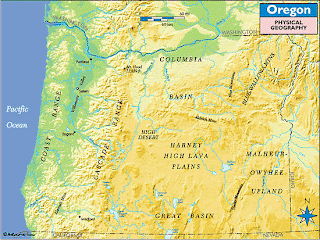There is a great amount of potential for San Pedro Sula, Honduras to be impacted economically and physically by global warming and subsequent events. Because it is a tropical climate already hot temperatures will increase and potentially effect the health of the human populations. Predictions show a possibility of a decrease in precipitation because of the low latitude of my location; agriculture will also be negatively impacted and water shortages are likely. San Pedro Sula lies in close proximity to a large river with expectations of increased annual river runoff, there is also a close proximity to coastal mangroves which will be greatly affected by global warming. San Pedro Sula is only 37 miles inland from low-lying coastal systems which will be stressed due to sea level rise, and will inevitably impact San Pedro Sula because of population displacement. It is generally predicted that San Pedro Sula will be warmer and drier than the present climate trend. There is also a possibility of economic food shortages from oceanic wildlife due to the increase of acidification in the oceans and the coral bleaching that is taking place. There is also a threat of increased cyclonic activity which could bring increased instances of disease, hunger, and deterioration of human settlements.
 | ||
| Climate Change 2007: Synthesis Report Summary for Policymakers -- http://www.ipcc.ch/pdf/assessment-report/ar4/syr/ar4_syr_spm.pdf |
 |
| http://dornsife.usc.edu/natural-history-ca/ |
Most of the economy in San Pedro Sula is derived from agriculture and raising livestock. Both of these economic means will be diminished due to several factors including San Pedro Sula's proximity to the ocean and and an increase in pests. Farming conditions will change making agriculture unpredictable and livestock will have a greater potential for casualty. In Central America, dengue fever is spreading above its former limit of 3,300 feet (1,006 m) and has been reported above 4,000 feet (1,219 m).
Species loss from coral reef bleaching will greatly impact San Pedro Sula and the surrounding cities, since the species that will be effected first are used for food locally and worldwide.
 |
| Bleached fire coral and christmas tree worm on top (Flower Gardens Bank bleaching 2010). High resolution (Credit: NOAA, FGBNMS) -- http://www.noaanews.noaa.gov/stories2010/20100922_coralbleaching.html |
 |
| http://www.noaanews.noaa.gov/stories2010/20100922_coralbleaching.html |
Do to possible increase of annual river run off, the Ulua River, in close proximity to San Pedro Sula is at an increased risk to flooding.
 |
Aerial View of Flooded Ulua River -- http://www.corbisimages.com/stock-photo/rights-managed/YA021292/aerial-view-of-flooded-ulua-river |
Mangrove forests are one of the most
biologically diverse forests, and are sometimes known as
the "rainforests by the sea." They are breeding grounds for multiple species including fish, shrimp, prawns, crabs, shellfish and
snails. Mangrove forests are also nesting sites for many species as well as, an essential food source. Mangrove forests are vulnerable to pollutants such as crude oil, and continual flooding which concentrates pollutants like sewage, toxic
minerals and pesticides and herbicides. The effects on wildlife and human settlements in areas near mangrove forests can have a detrimental impact on San Pedro Sula.
 | ||||
| Source: World Wildlife Fund-- http://www.eoearth.org/article/Honduras |
2. Central American Atlantic moist forests
3. Central American dry forests
4. Central American montane forests
5. Central American pine-oak forests
6. Southern Mesoamerican Pacific mangroves
7. Meskito pine forests
 |
| Mangrove Forests -- http://www.blueplanetbiomes.org/rnfrst_plant_page.htm |
 |
| Diet of Macaca fascicularis in a Mangrove Forest -- http://www.brown.edu/Research/Primate/lpn42-4.html |
 |
| Oil pipeline construction degraded this mangrove forest -- http://cecentralsierra.ucanr.org/Forestry/?start=5&blogasset=46980 |
Although data does not necessarily show that there will be an increase in cyclonic activity, it is believed that with continued warming heavy rainfall associated with cyclones will increase, sea level rise is expected to further compound tropical cyclone surge impacts, and cyclonic wind speeds will increase. Due to cyclones and a potentiality for increased cyclonic activity population destruction and displacement are also events that could effect San Pedro Sula.
Some geologists have tried to show evidence that global warming has created more cyclonic storms, however this has been refuted and is a debatable topic. Some scientists say that the reason why it looks like there have been more storms since the 1900's is because technology has advanced, making it possible to see storms that we couldn't see before.
 |
| http://www.skepticalscience.com/Did-global-warming-cause-Hurricane-Katrina.html |
 |
| http://blogs.nature.com/u5d050a25/the-life-scientific-not-aquatic/ |
 |
| http://www.preventionweb.net/english/professional/news/v.php?id=2367 |
 |
Hurricane Alex, a category 3 storm at its
strongest, traveled north along the east coast of North America in
August 2004 causing flooding, strong waves, and rip tides along the
coast.
Click on image for full size Courtesy of NOAA -- http://www.windows2universe.org/earth/Atmosphere/hurricane/hurricane.html |
Mitigative factors that can be explored in an area like San Pedro Sula include risk communication between decision makers and local citizens, improved building codes, improved forecasting capacity and implementation of improved early warning systems, mangrove conservation, restoration, and replanting, maintenance of drainage systems, and literature learning.
 |
| http://www.mhi.ca/projects/display,project/157/power-quality-training |
 |
| http://www.uncosa.unvienna.org/docs/iamos/2005/open_session_presentations/WMO_files/frame.htm |
 |
Mangrove Restoration in Honduras – Project Report -- http://www.fallsbrookcentre.ca/mangrove-restoration-in-honduras-project-report/ |
 |
Encourage Community-Based Mangrove Conservation -- http://globalwa.jolkona.org/projects/184 |
 |
| http://www.huffingtonpost.com/jeff-biggers/climate-hope-some-inspiri_b_372830.html |







































